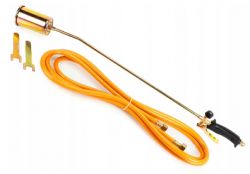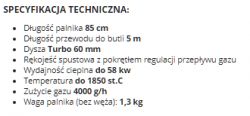Lisek64 wrote: Reducer = reduces, i.e. it does not cut off the gas flow in the event of a hose leakage
I think so too, and it has a check valve, at least the one from 1 post in this topic.
freebsd wrote: aquastop systems have nothing to do with the safety against damaging the hose
It's not ?

the inner hose bursts water - after pressure, it gets to the outer hose and further activates the safety valve

Lisek64 wrote: The flame will go out faster than it will be "pulled" into the hose
And let's stick to it

saskia wrote: and you need to heat at the same time the substrate and the pape
Valuable note, you can see it in YT videos as well.
saskia wrote: sticks - unfolds as it should by itself without pressing
But when the end is about 1 m, then you have to press down, because the weight is no longer there.
saskia wrote: These roofing papers, which are adapted to be glued with a hot burner, have a thin foil and it is practically enough that most of the foil will disappear from the flame
This is the rule, the foil disappears - the end of heating.
saskia wrote: Leaving the old tar paper is a wasted new one, because the old self will destroy it very quickly,
Not really, talk to the roofers about the bigger problem with the old roofing paper cut a piece and stick the thermo there and then on top of the roll.
saskia wrote: No cutting the blisters will help
For me, there was a leak between the plates and actually on the roof of the area. about 50 cm sq. there was a large bladder, I cut it crosswise, while preparing a flat substrate for the roofing felt, I glued it with glue
and it stopped dripping from above

and I have not yet put a heat seal.
Roofers cut crosswise and heat with a burner - the tar melts etc ... because they don't want to wait for the sticky to cool down

. If you break the old one, you cannot do without insulation, then you have a roof covering practically like bare concrete ...
freebsd wrote: As for the tar paper, thicker (5 mm) with good warp is cool.
I chose 5.3+ SBS

, polyester fiber, not glass (glass tears easily)
freebsd wrote: @ MM2X - arrange and don't worry, it's done easily, even one at a time
I can't wait, I'm into it already ... but unfortunately the weather

in the meantime, I prepare the flashings









